Japanese cuisine is renowned globally for its delicate flavors, meticulous presentation, and emphasis on fresh, seasonal ingredients. Sushi, in particular, has become a worldwide phenomenon, captivating palates with its unique combination of rice, seafood, and vegetables. Understanding the fundamental techniques and ingredients involved is key to appreciating the artistry behind this iconic dish. This article will delve into some of the most popular types of sushi, examining their construction and the crucial role of different elements, particularly the seemingly simple yet incredibly important nori seaweed. Ultimately, we’ll explore how these components work together to create a truly unforgettable culinary experience.
Sushi’s history stretches back centuries, evolving from a method of preserving fish by layering it with rice. Over time, the dish transformed into the refined, artistic form we recognize today, largely thanks to the influence of the Edo period (1603-1868). The specific techniques and ingredients used vary greatly, leading to a stunning diversity of sushi styles, each with its own distinct character and appeal. Let’s take a closer look at some of the most common preparations.
Nigiri: The Foundation
Nigiri is arguably the most recognizable form of sushi. It consists of a small, oblong mound of vinegared sushi rice (shari) pressed by hand, topped with a slice of raw seafood (neta). The preparation is deceptively simple, requiring considerable skill to achieve the perfect balance of flavors and textures. The rice is crucial – it must be perfectly cooked, seasoned with rice vinegar, sugar, and salt, and have a slightly sticky texture to hold its shape.
The selection of the neta is equally important. High-quality tuna, salmon, yellowtail, and shrimp are common choices, each offering a distinct flavor profile. The chef (itamae) carefully selects the fish for its freshness, color, and fat content, ensuring optimal taste and presentation. Often, the chef will lightly season the neta with soy sauce and grated wasabi before placing it on the rice. This combination of rice and topping is presented with a slight bow, demonstrating respect for the ingredients and the diner.
Traditionally, nigiri is eaten with chopsticks and dipped lightly in soy sauce, although some purists prefer to avoid soy sauce altogether to appreciate the natural flavors of the fish. The simplicity of nigiri truly highlights the quality of the ingredients, making it a cornerstone of sushi appreciation.
Maki: Rolling into Deliciousness
Maki refers to sushi rolls, where rice and fillings are rolled together in nori seaweed. There are countless variations of maki, ranging from the classic cucumber maki to the more complex salmon avocado maki. The fundamental process involves placing a sheet of nori on a bamboo rolling mat (makisu), spreading a thin layer of rice over it, adding the desired fillings, and then rolling it tightly.
Different types of maki are distinguished by their shape and fillings. Hosomaki are thin rolls with only one filling, typically cucumber or tuna. Futomaki are thick rolls with multiple fillings, offering a more substantial and flavorful experience. Uramaki, or inside-out rolls, have the rice on the outside, often coated in sesame seeds or tobiko (flying fish roe), creating a visually striking and texturally interesting roll. Mastering the technique of rolling maki requires practice and precision to achieve a consistently attractive and compact roll.
The nori plays a critical role in maki, providing a slight saltiness and a pleasant, chewy texture that contrasts beautifully with the softness of the rice and the richness of the fillings. Its adhesive properties are also essential for holding the roll together.
Sashimi: Celebrating the Fish
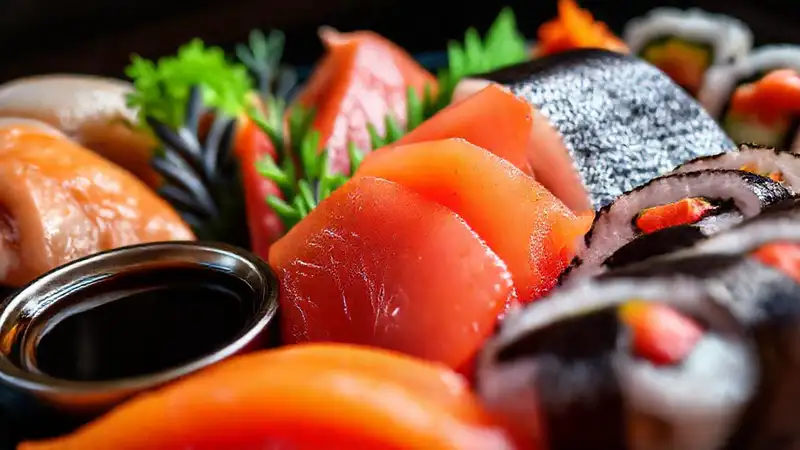
Sashimi is presented as thinly sliced raw fish, typically served with soy sauce, wasabi, and ginger. It is an art form in itself, requiring the chef to expertly fillet the fish and slice it with incredible precision and skill. The focus is entirely on showcasing the quality and flavor of the fish.
Sashimi is often served as a complement to sushi, providing a pure, unadulterated taste of the seafood. The cuts of fish are chosen to highlight their texture and flavor, ranging from the buttery melt-in-your-mouth texture of fatty tuna (otoro) to the firmer, cleaner taste of salmon. Presentation is equally important; the slices are carefully arranged on a plate, often in a visually appealing pattern.
While it lacks the rice component of sushi, sashimi shares the same commitment to freshness and quality. It’s a testament to the skill of the chef and the exceptionalness of the fish, a true celebration of the ocean's bounty.
Temaki: A Casual Creation
Temaki translates to “hand roll,” and it's a more casual and interactive style of sushi. It involves forming a cone-shaped portion of nori seaweed, filled with rice, fish, vegetables, and other ingredients. The diner typically rolls it themselves, allowing for a personalized and engaging sushi experience.
Temaki offers a fantastic opportunity to experiment with different flavor combinations. You can add ingredients like avocado, cucumber, crab meat, or even spicy mayonnaise. The cone shape allows for a wider variety of ingredients to be incorporated, creating a more substantial and varied sushi experience. It’s commonly enjoyed as an appetizer or snack, especially at sushi bars and festivals.
The convenience of temaki makes it a popular choice for both casual diners and those who enjoy customizing their sushi. The slightly uneven shape and the mix of textures and flavors contribute to its charm and appeal.
Conclusion
In conclusion, sushi represents a remarkable cultural heritage deeply rooted in Japanese tradition and culinary philosophy. From the meticulous preparation of nigiri to the playful creativity of temaki, each style offers a unique and rewarding experience. The seemingly simple nori seaweed is a foundational element, contributing essential flavor, texture, and structure to a wide array of sushi preparations.
Ultimately, the beauty of sushi lies in its dedication to quality ingredients, skilled craftsmanship, and a harmonious balance of flavors. It’s a dish that continues to evolve and captivate, proving its enduring appeal and solidifying its place as one of the world's most celebrated cuisines.
 Can you detail Tokyo's nigiri rice preparation
Can you detail Tokyo's nigiri rice preparation What makes Tokyo’s otoro sushi so prized, truly
What makes Tokyo’s otoro sushi so prized, truly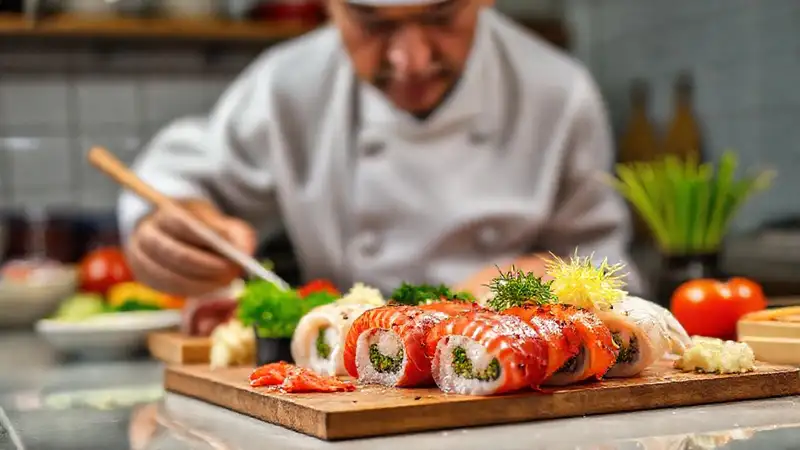 How do you replicate authentic Japanese sushi flavors
How do you replicate authentic Japanese sushi flavors How does Tokyo’s tradition ensure high standards
How does Tokyo’s tradition ensure high standards How does Hokkaido’s connection to agriculture help
How does Hokkaido’s connection to agriculture help How does Kansai’s culinary heritage shine through
How does Kansai’s culinary heritage shine through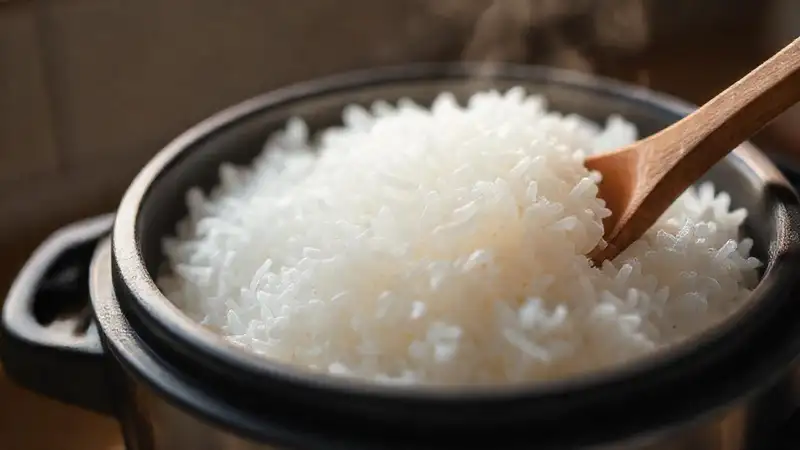 How does steaming Firini rice preserve its fluffiness
How does steaming Firini rice preserve its fluffiness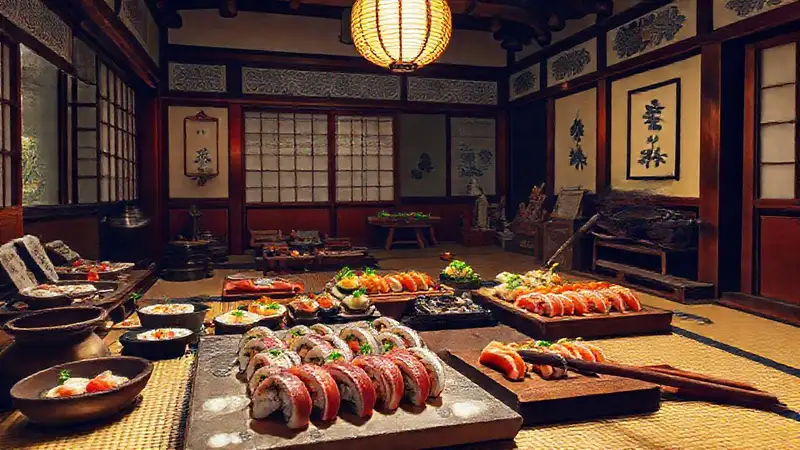 How does Kansai’s art influence the sushi’s appearance
How does Kansai’s art influence the sushi’s appearance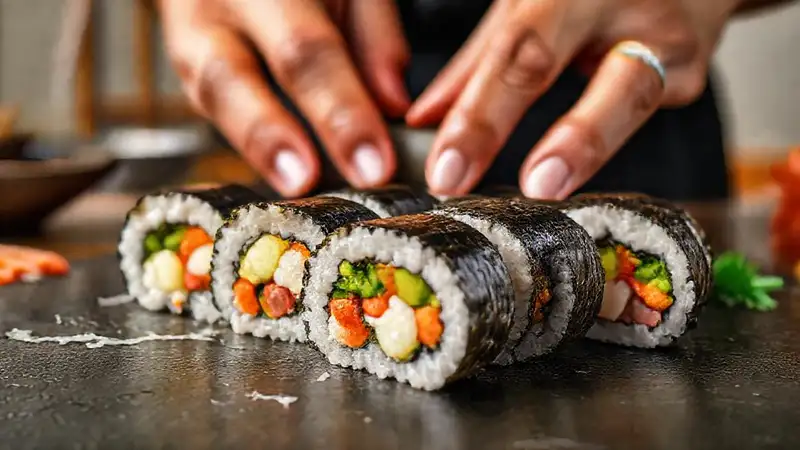
Deja una respuesta